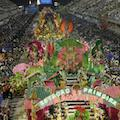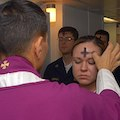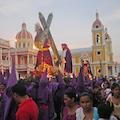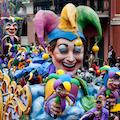Search results
Mardi Gras (UK: / ˌ m ɑːr d i ˈ ɡ r ɑː /, US: / ˈ m ɑːr d i ɡ r ɑː /; also known as Shrove Tuesday) is the final day of Carnival (also known as Shrovetide or Fastelavn); it thus falls on the day before the beginning of Lent on Ash Wednesday.
Jan 25, 2010 · What Is Mardi Gras? Mardi Gras is a tradition that dates back thousands of years to pagan celebrations of spring and fertility, including the raucous Roman festivals of Saturnalia and Lupercalia.
Jun 25, 2024 · Mardi Gras is a festive day celebrated in France on Shrove Tuesday (the Tuesday before Ash Wednesday), which marks the close of the pre-Lenten season. The French name Mardi Gras means Fat Tuesday, from the custom of using all the fats in the home before Lent.
Mardi Gras is French for Fat Tuesday, the season is known as Carnival and begins on 12th Night, January 6th, and extends until midnight before Ash Wednesday. Club, or Krewe, balls start soon after, though most are extremely private, with their Kings and Queens coming from wealthy old families and their courts consisting of the season's debutantes.
Feb 5, 2024 · Mardi Gras is known for its indulgence—and no food is more ubiquitous in New Orleans during Carnival season than the king cake. This ring-shaped, yellow, green, and white-colored cake is baked...
Everything you need to know about Mardi Gras, including updated parade routes, traditions, the best places to get Mardi Gras beads, masks, king cakes and more!
By the late 1830s, New Orleans held street processions of maskers with carriages and horseback riders to celebrate Mardi Gras. Dazzling gaslight torches, or "flambeaux," lit the way for the krewe's members and lent each event an exciting air of romance and festivity. In 1856, six young Mobile natives formed the Mistick Krewe of Comus, invoking ...
Mardi Gras traditions range from king cakes to Mardi Gras Indians and Mardi Gras balls. Click here to learn about the history of Mardi Gras and the celebrations in New Orleans.
Mardi Gras or Fat Tuesday is always 47 days before Easter. Carnival season begins on Jan. 6, Twelfth Night, the Christian holy day of the Epiphany, and ends with Mardi Gras. It's a celebration of life that precedes the fasting and simple living during the Christian season of Lent.
Mardi Gras is about music, parades, picnics, floats and excitement. It's one big holiday in New Orleans! Revelers know to wear costumes or at least dress in purple, green, and gold, and adorn themselves with long beads caught from the floats of previous parades.





